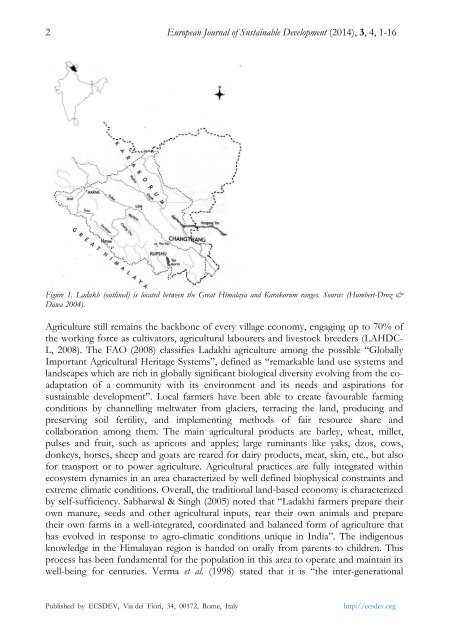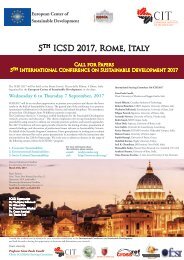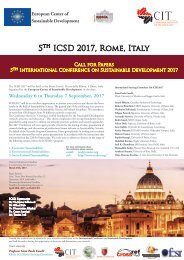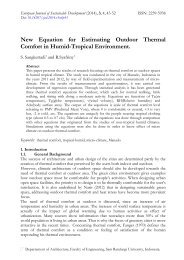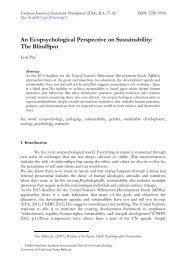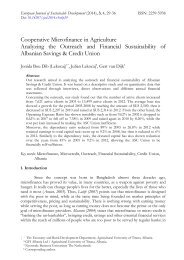Emergy evaluation of a traditional farming system. Case study: Leh District (Ladakh - Indian Trans-Himalaya)
Ladakh traditional farming system has been included on the F.A.O. list of possible “Globally Important Agricultural Heritage Systems”, worthy of being preserved and conserved. The paper describes and assesses cultivation practices in a typical familymanaged farm, located in central Ladakh, analysing how natural resources are exploited, conserved and recycled. Emergy evaluation, an environmental accounting methodology, has been applied to evaluate and compare five staple crop productions: barley, wheat, pea, mustard, and fodder alfalfa. Unit Emergy Values of products (UEV, emergy per unit product, a measure of the environmental production cost) are calculated, taking into account the inputs to production such as water from glaciers, soil fertility, human and animal labour, and more. Results show that the traditional agricultural practices in Ladakh, completely supported by renewable flows, are efficient in the use of local resources. In fact, the UEVs of agroproducts are similar to those of analogous products of conventional agriculture (e.g. 5.27E+05 and 6.64E+05 semj/J for barley and wheat in Ladakh, respectively; 7.37E+05 semj/J for corn in USA), though the inputs of Ladakh agriculture are strongly limited in type and quantity. At the same time, local farmers can create, maintain and rebuild soil functions whose UEV is 1.62E+07 semj/J. Keywords: Ladakh, agrosystem, emergy, environment, sustainability
Ladakh traditional farming system has been included on the F.A.O. list of possible “Globally Important Agricultural Heritage Systems”, worthy of being preserved and
conserved. The paper describes and assesses cultivation practices in a typical familymanaged farm, located in central Ladakh, analysing how natural resources are exploited, conserved and recycled. Emergy evaluation, an environmental accounting methodology, has been applied to evaluate and compare five staple crop productions: barley, wheat, pea, mustard, and fodder alfalfa. Unit Emergy Values of products (UEV, emergy per unit product, a measure of the environmental production cost) are calculated, taking into account the inputs to production such as water from glaciers, soil fertility, human and
animal labour, and more. Results show that the traditional agricultural practices in Ladakh,
completely supported by renewable flows, are efficient in the use of local resources. In fact, the UEVs of agroproducts are similar to those of analogous products of conventional agriculture (e.g. 5.27E+05 and 6.64E+05 semj/J for barley and wheat in Ladakh, respectively; 7.37E+05 semj/J for corn in USA), though the inputs of Ladakh agriculture are strongly limited in type and quantity. At the same time, local farmers can create, maintain and rebuild soil functions whose UEV is 1.62E+07 semj/J.
Keywords: Ladakh, agrosystem, emergy, environment, sustainability
Create successful ePaper yourself
Turn your PDF publications into a flip-book with our unique Google optimized e-Paper software.
2 European Journal <strong>of</strong> Sustainable Development (2014), 3, 4, 1-16<br />
Figure 1. <strong>Ladakh</strong> (outlined) is located between the Great <strong>Himalaya</strong> and Karakorum ranges. Source: (Humbert-Droz &<br />
Dawa 2004).<br />
Agriculture still remains the backbone <strong>of</strong> every village economy, engaging up to 70% <strong>of</strong><br />
the working force as cultivators, agricultural labourers and livestock breeders (LAHDC-<br />
L, 2008). The FAO (2008) classifies <strong>Ladakh</strong>i agriculture among the possible “Globally<br />
Important Agricultural Heritage Systems”, defined as “remarkable land use <strong>system</strong>s and<br />
landscapes which are rich in globally significant biological diversity evolving from the coadaptation<br />
<strong>of</strong> a community with its environment and its needs and aspirations for<br />
sustainable development”. Local farmers have been able to create favourable <strong>farming</strong><br />
conditions by channelling meltwater from glaciers, terracing the land, producing and<br />
preserving soil fertility, and implementing methods <strong>of</strong> fair resource share and<br />
collaboration among them. The main agricultural products are barley, wheat, millet,<br />
pulses and fruit, such as apricots and apples; large ruminants like yaks, dzos, cows,<br />
donkeys, horses, sheep and goats are reared for dairy products, meat, skin, etc., but also<br />
for transport or to power agriculture. Agricultural practices are fully integrated within<br />
eco<strong>system</strong> dynamics in an area characterized by well defined biophysical constraints and<br />
extreme climatic conditions. Overall, the <strong>traditional</strong> land-based economy is characterized<br />
by self-sufficiency. Sabharwal & Singh (2005) noted that “<strong>Ladakh</strong>i farmers prepare their<br />
own manure, seeds and other agricultural inputs, rear their own animals and prepare<br />
their own farms in a well-integrated, coordinated and balanced form <strong>of</strong> agriculture that<br />
has evolved in response to agro-climatic conditions unique in India”. The indigenous<br />
knowledge in the <strong>Himalaya</strong>n region is handed on orally from parents to children. This<br />
process has been fundamental for the population in this area to operate and maintain its<br />
well-being for centuries. Verma et al. (1998) stated that it is “the inter-generational<br />
Published by ECSDEV, Via dei Fiori, 34, 00172, Rome, Italy<br />
http://ecsdev.org


